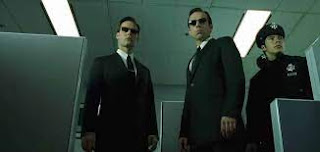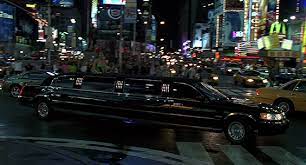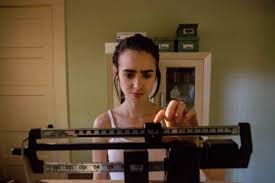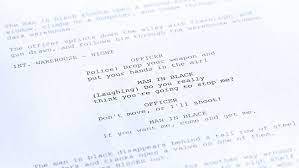Genre Research - Thriller
Thriller is a film genre centered around shock value, suspense, and cliffhangers. Usually these films depict complex story lines leaving viewers forever shocked as to what's to come next and constantly on the edge of their seats!
C.A.M.S (camera angles, movements, shots)
- high angle: High angles help to create a sense of vulnerability, almost demeaning the character's capabilities as they face whatever bigger than life obstacle they are facing. In thrillers, our main protagonist may be facing a villain or catastrophe making them appear vulnerable.
- extreme close up shot: In a classic suspenseful thriller, emotion is everything to convey the necessary intense feelings felt by the character. Screams or gasps require emphasis to get a sense of what the character is feeling or reacting to, extreme close ups help portray the tremendously.
- wide shots: Wide shots are important for emphasizing the character's place in a setting. To portray a suspenseful isolation felt by a character, wide shots will be used to show the contrast between the vast space and the solo character.
- tracking shot: These hots help to give point of view to what the character is navigating through and experiencing. If a character is walking through a mysterious house or abandoned building, this type of shot helps to build suspense as the character treads through the setting.
- low angles: Low angles are essential to a thriller if we are viewing a scene with a potential powerful and treacherous villain. This low angle emphasizes the power held by whoever is on screen to make the setting appear small and minuscule.
- panning (movement): Panning helps to give establishment to where the character is. This movement is usually done to draw detail to the setting, typically pans will show the setting and then cut to a significant object in the scene or the character.C.L.A.M.P.S (costumes, lighting, actors, makeup, props, setting)
- costumes: In thrillers, common costumes include strategic dark and thorough clothing that contribute to the feeling of suspense. Trench coats, hats, dark colored clothes in deep browns, and black will often me used. These coats and hats can be used to depict a detective of a stalker who treads through the night. Suits will typically be worn by men to signify a chilling dominance. Many thrillers will involve a policeman or some sort of law enforcement to deal with a crime so police uniforms are often featured.
- lighting: Thrillers typically use low light and more harsh lighting to depict suspense. Under lighting, a lighting technique where the light is placed underneath the on screen character, helps to portray the character as more dominant. Dark lighting is also used, in scenes taking place at night or in dark building, this form of lighting is essential since it takes away visibility creating a need to foreshadow for the suspense.
- makeup: Makeup is typically left to basic stage makeup. Since thrillers
are films with a heightened sense of realism, a full face isn't always used or necessary.
- props: Since thrillers are suspenseful and involve heightened action sometimes danger, common props include a gun, briefcases, knives, money stacks. All of these props can present themselves in major conflict such a kidnapping or a stalking which is usually depicted in thrillers.
- setting: Many thrillers will take place in rural small towns or suburban areas to highlight an irony of so much suspense in such an unsuspecting setting. The woods are a common setting since they give off a creepy and eery vibe to the film.






Comments
Post a Comment